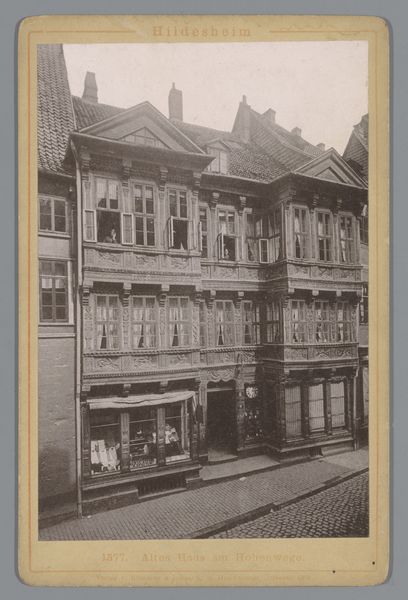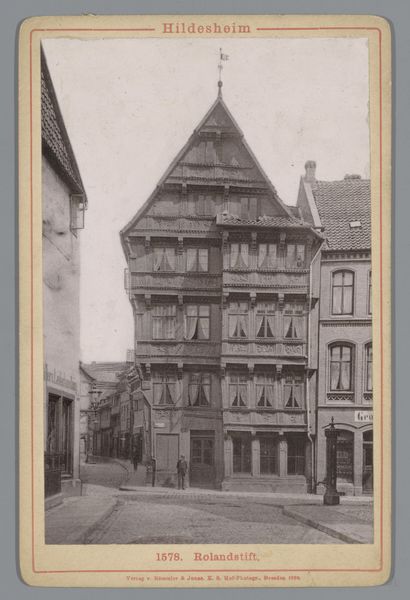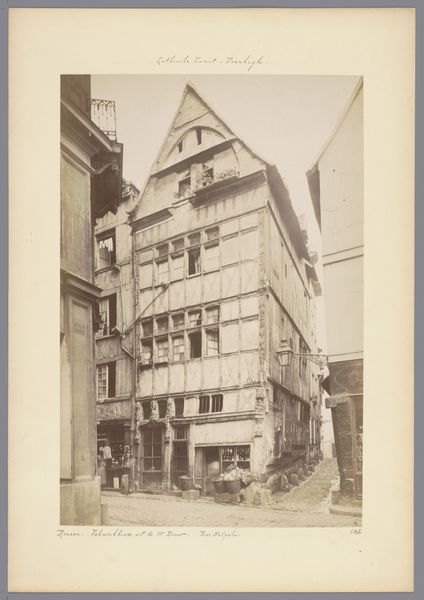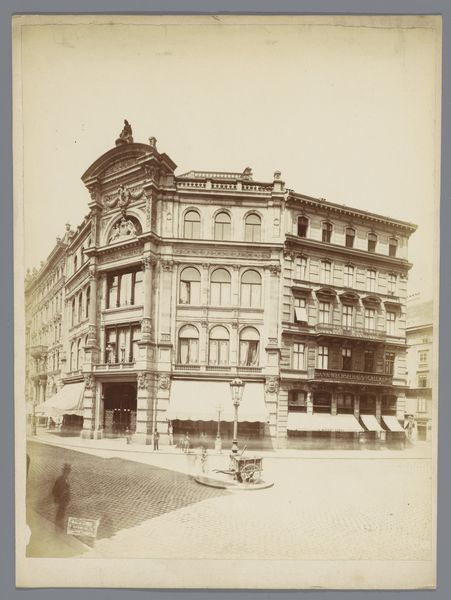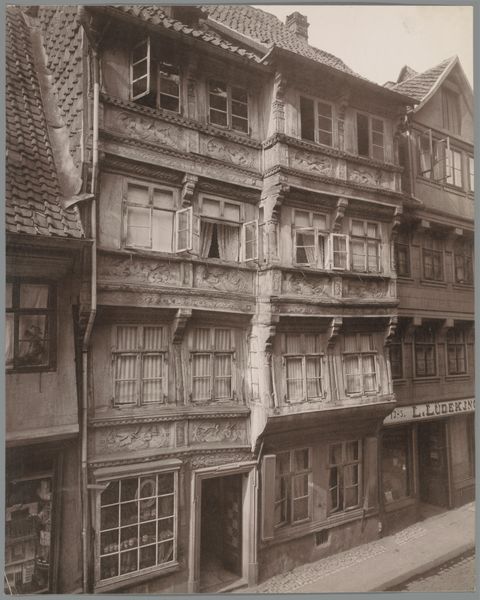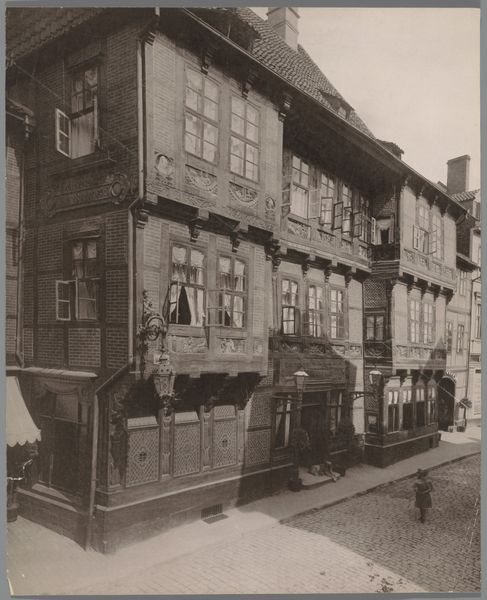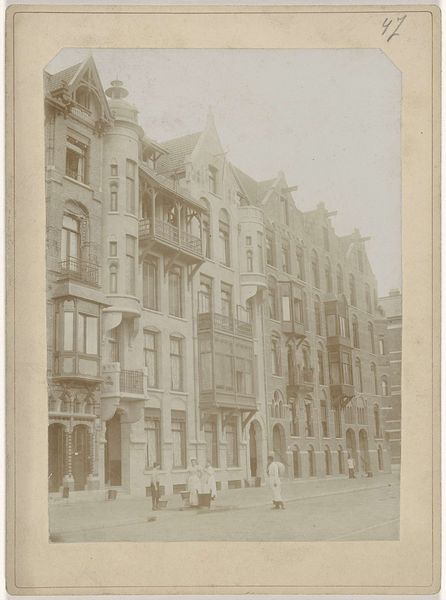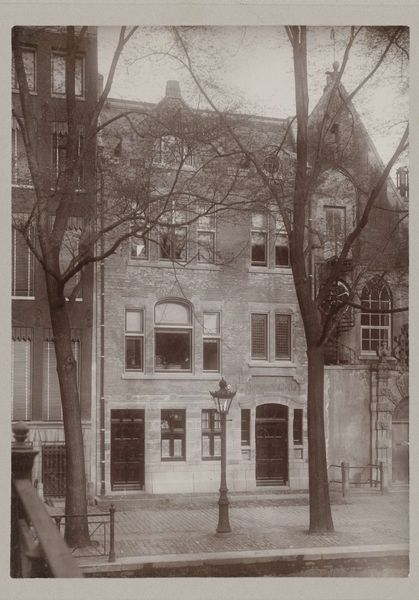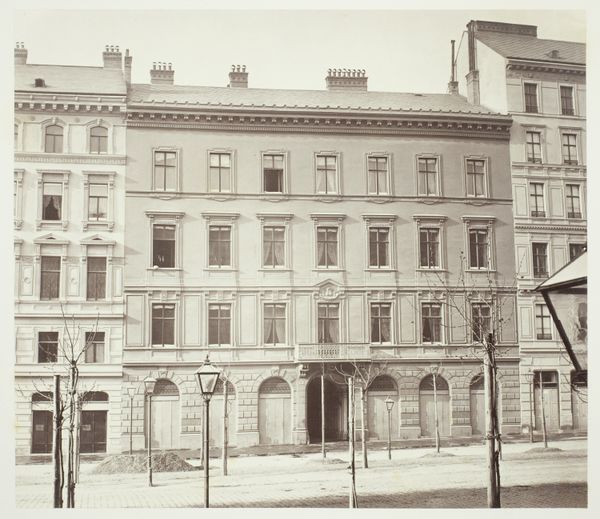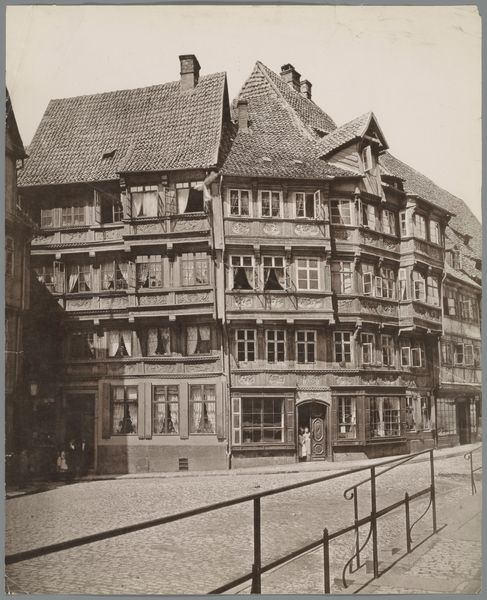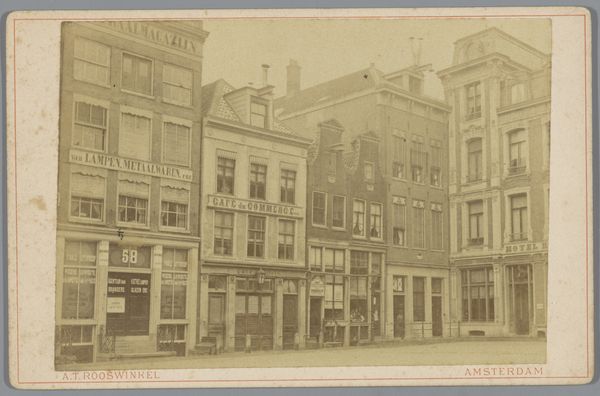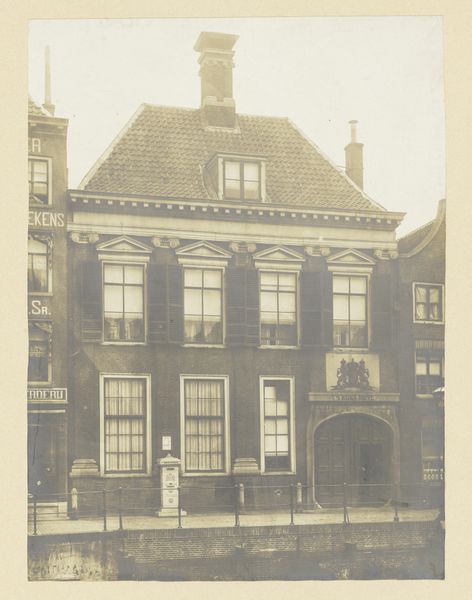
print, photography, architecture
# print
#
german-expressionism
#
historic architecture
#
photography
#
cityscape
#
architecture
#
realism
Dimensions: height 294 mm, width 232 mm
Copyright: Rijks Museum: Open Domain
Curator: This captivating photographic print is titled "Huis aan de Hoher Weg, Hildesheim," dating back to sometime between 1880 and 1900. Editor: It has a beautifully intricate, almost gingerbread-like quality. The woodwork seems so carefully, painstakingly rendered. It almost feels tactile. Curator: Exactly! The building's elaborate facade, heavily ornamented with carvings, draws our eye in immediately. Considering the period, we can imagine the intense labor involved in its creation and maintenance, and the materials sourced locally, given its context. It seems to be celebrating a very specific and located aesthetic. Editor: I'm also struck by the figures standing near the entrance, seemingly paused in time. What stories do they and the building hold about that period? Considering urban planning at the time, did buildings such as these face displacement in favor of modern buildings or renovations? I would even go so far as to bet the picture itself may represent pride and historical interest to halt a potential modernization. Curator: Good point. This type of building would have represented wealth, status and a traditional social hierarchy in the community, preserved and promoted through local artisanal labour. Look at how this craftsmanship also likely created economic opportunities, maybe as a symbol of local expertise. Editor: The use of photography as a medium is important too. Beyond mere documentation, the photo becomes a means for controlling the narrative surrounding progress and its socio-economic costs, capturing social memory amidst rapid transformation, and maybe giving us a biased vision based on its creators and promoters. What does this style symbolize for its inhabitants? Curator: Ultimately, this piece is more than a historical record; it provokes questions about labor, materiality, and urban space, urging us to explore the social dimensions of art beyond its aesthetic value. Editor: Right! This artwork not only freezes a moment in time, but challenges us to consider the layers of identity, labour, and perhaps resistance intertwined in the cityscapes of the past and present.
Comments
No comments
Be the first to comment and join the conversation on the ultimate creative platform.
